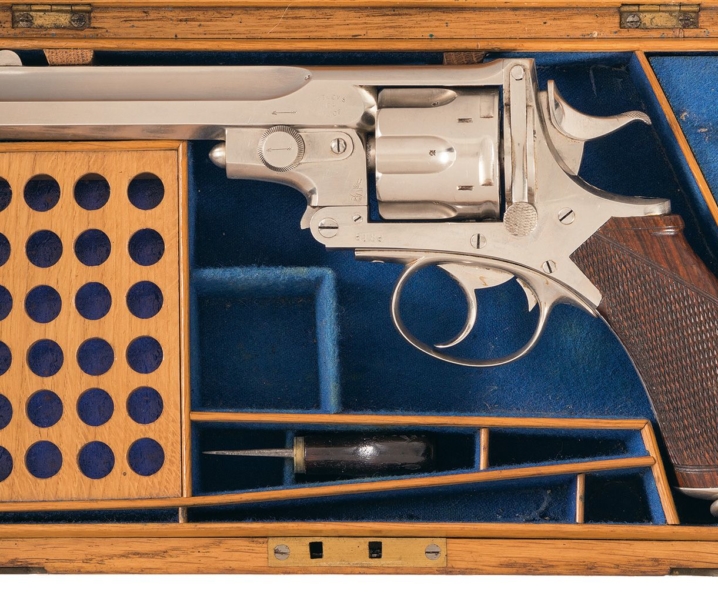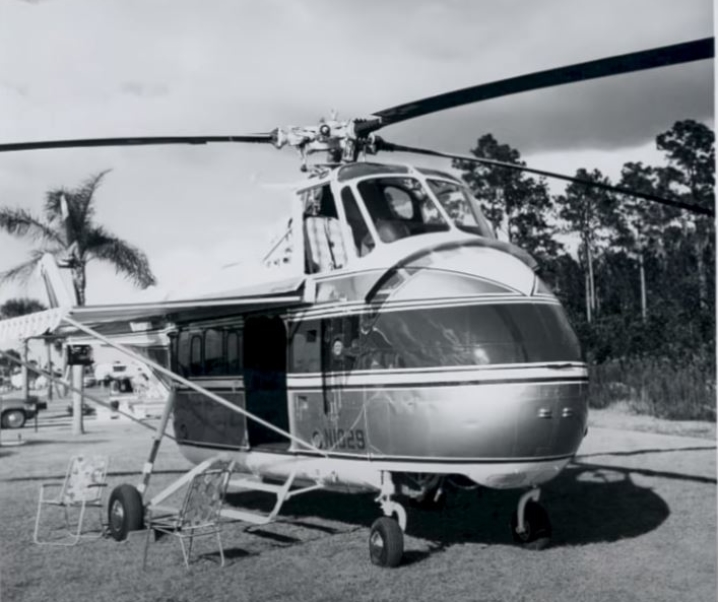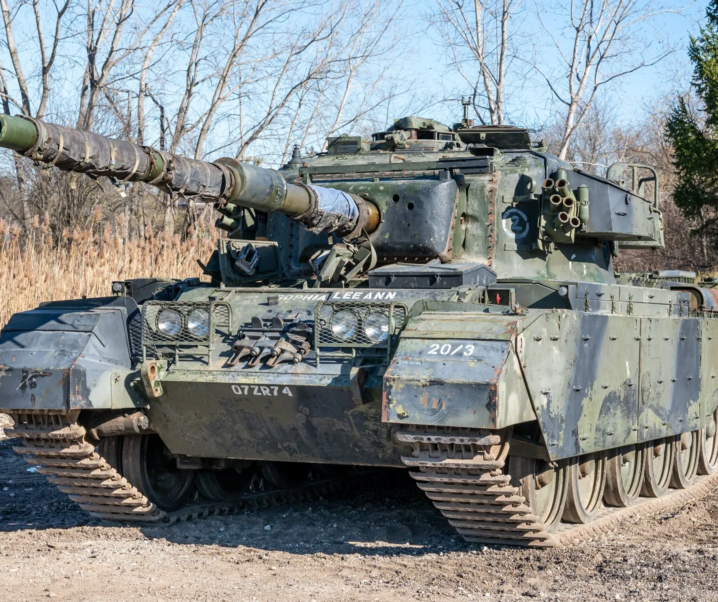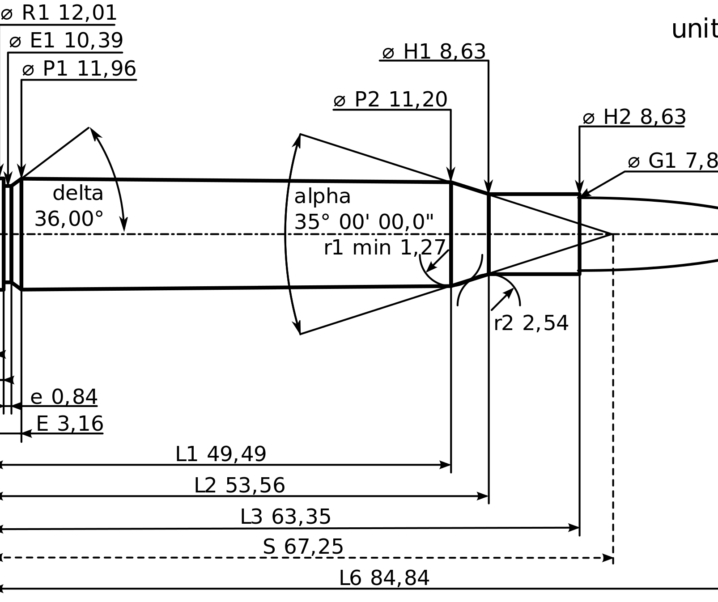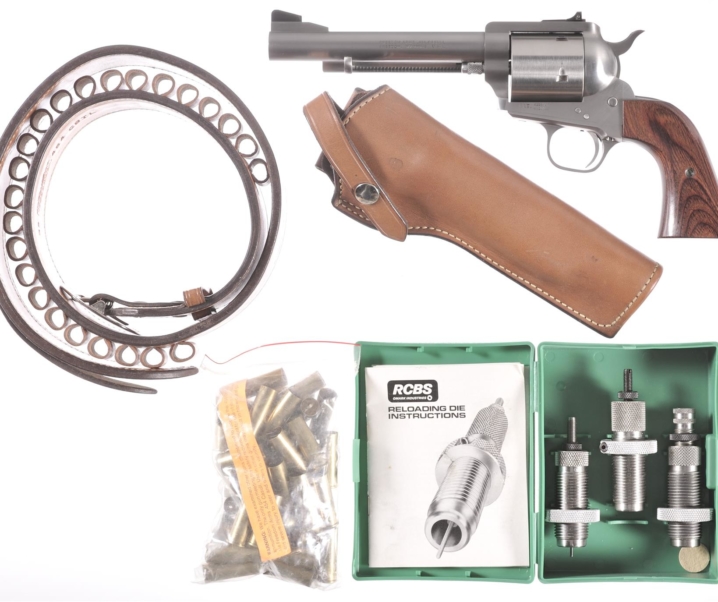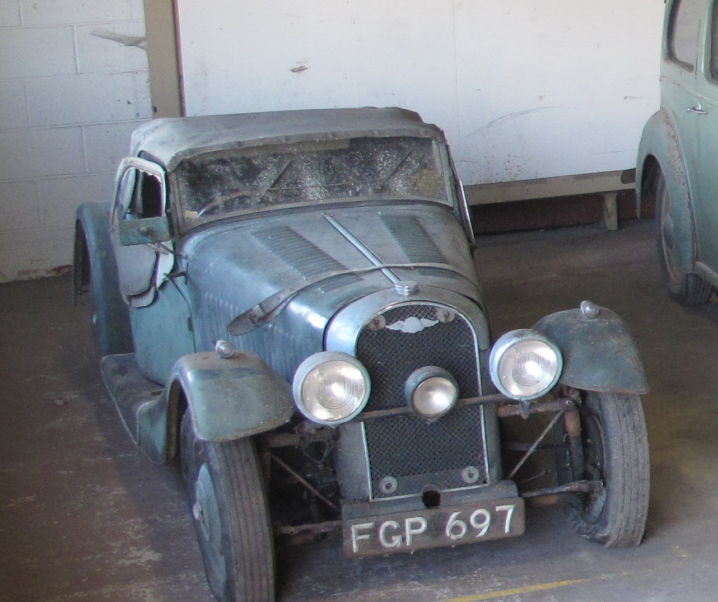The Lee-Enfield rifle was made in a number of calibers other than the .303 British with which most of us are familiar. One of the better ones for a hunting rifle was the .375 2½” Nitro Express. The .375 2½” Nitro Express is not to be confused with the .375 Holland & Holland Flanged Magnum Nitro Express as it was the rimmed (i.e. flanged) equivalent of the .375 Holland & Holland Magnum (with the belted case): the .375 2½” was not anything like either of those but instead, if you can imagine a .303 British case lengthened to 2½” and necked up to take .375″ diameter bullets then you’ve got it.
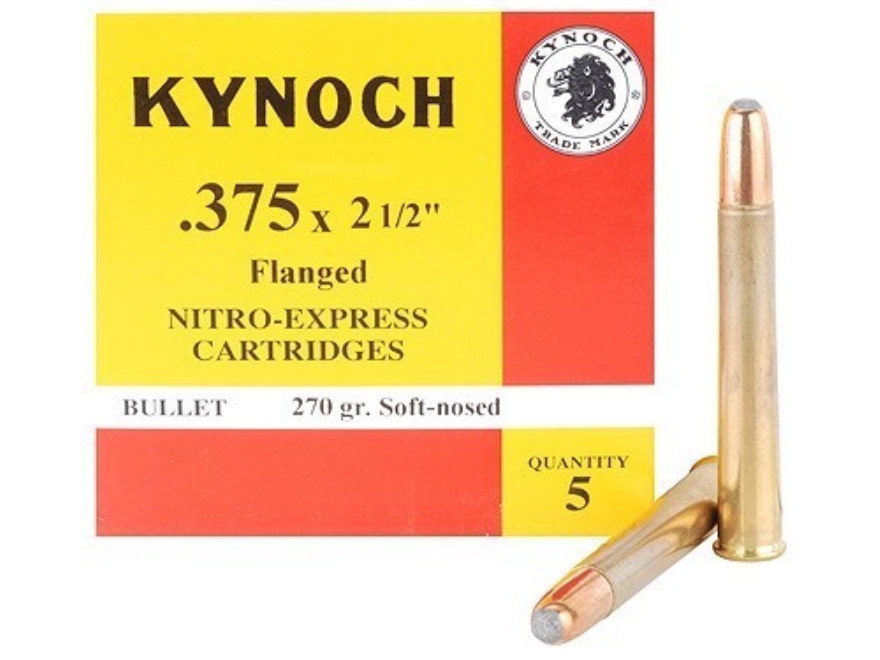
The .375 2½” was created in 1899. It was made for double rifles and single shots based either on the Martini action or on the Farquharson. It was also chambered by British arms maker BSA (Birmingham Small Arms) in sporting Lee-Enfield bolt action rifles. In a Lee-Enfield rifle the cartridge earned itself a reputation for accuracy and as a great Red Deer cartridge.

A Lee-Enfield rifle in this caliber, with its fast action and good magazine capacity, probably rates as one of the best wild pig rifles one could ever wish for. Short, fast handling, and fast reloading at the shoulder, with a cartridge that does not generate punishing recoil, but delivers a 270 grain .375″ bullet at 2,000 fps in the direction of the soon to be pork chops quarry with great efficaciousness.

Finding ammunition for the .375 2½” Nitro Express is not easy: the previous Kynoch loaded cartridges are listed on Midway USA for USD$52.99 per box of five. That translates to USD$10.60 per cartridge which takes all the fun out of the proposed pig shooting expedition. On the plus side however is that the ammunition is not hard to make. Dies can be obtained from Huntington’s (also Northern Shooter Supplies in Australia), and cases can be fabricated from a different parent case (Northern Shooter Supplies in Australia also list actual .375 2½” Nitro Express cases).

Although the .375 2½” Nitro Express shares much the same rim and head diameters as the .303 British, the .303 is shorter with a length of 2.222″. There are a couple of possible cases that can be used however; one is the .405 Winchester, and the other is the 40-70 Sharps Straight which has been undergoing a bit of a revival with Black Powder Metallic Silhouette shooters. The .405 Winchester is near perfect though.
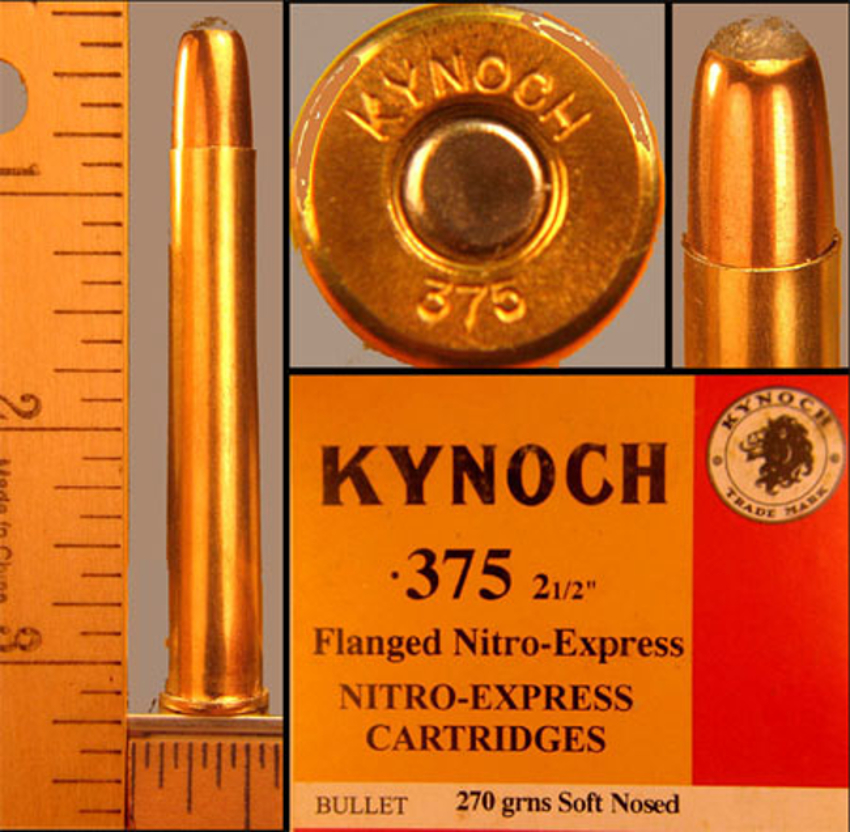
The rim diameter of the .375 2½” Nitro Express is listed as being .523″ (by comparison with the .303 British which is .540″, the same as the .405 Winchester) with a head diameter of .456″ (the same as the .303 British and the .405 Winchester). Despite the slight difference in rim diameter the .405 Winchester case should work fine without the need to turn down the rim. The Lee-Enfield actions were mostly made for the .303 British chambering.
Load data is the next issue. There is only one reliable source for load data for this cartridge that I know of, and that is the Woodleigh Bullets Loading Manual: a manual you should really own if you are interested in classic British and Continental hunting rifles. You can get it at Amazon or directly from Woodleigh Bullets.
The original factory loading for the .375 2½” Nitro Express was for 40 grains of Cordite behind a 270 grain soft point bullet. The rifle pictured below is marked 40-270 MAX on the right side to indicate this is the loading it is proofed for. This was necessary as there was a more powerful factory loading for this caliber that used 40 grains of Cordite behind a 320 grain bullet. The 40-270 loading produced a breech pressure of 14 tons per square inch, the 40-320 loading produced 17 tons per square inch.
The Woodleigh manual lists loadings for their Catalog Number 42, 270 grain .375″ bullet as 46 grains of Varget (AR2208 in Australia), with a Winchester Large Rifle primer in a Bertram case, for a velocity of 1970fps. They also list 55 grains of H4350 (AR2209) for 1980fps. As these loads were worked up in Bertram cases which are not available anymore, you should reduce these if you are using cases made from .405 Winchester brass and work up, not exceeding the listed loads. Woodleigh recommends seating the bullet so that it has a sixteenth of an inch free movement before engaging the rifling. If you are not sure how to do that let us know via our Facebook page and we’ll do a short post on it.
There are two Woodleigh 270grain bullets, one for lower velocity calibers such as the .375 2½” Nitro Express (Cat. No. 42) and a different one designed for the .375 H&H (Cat. No. 43A) so its important to use the correct one for good expansion at the lower velocity of the .375 2½” NE.

The rifle pictured above is an original Watson Brothers made Lee-Enfield in .375 2½” Nitro Express. It is fitted with a handy tang safety catch and has a 24½” barrel. It also looks to be fitted with typical British folding leaf rear sights, with the front sight on a nicely integrated ramp. It is hard to tell for sure but the stock wood looks quite promising and might clean up and re-finish to become rather pretty, if you were going to re-finish the rifle.
The condition of this rifle is listed by Rock Island Auction as: “OE – GOOD: some minor replacement parts; metal smoothly rusted or lightly pitted in places, cleaned; lightly scratched, bruised or minor cracks repaired; in good working order. PRF – PROFESSIONALLY REFINISHED OR RESTORED“.
The Rock Island Auction description is: “Barrel rib marked “WATSON BROs. 29 OLD BOND St. LONDON”, with “375 EX/CORDITE 40-270 MAX” on the right side.”
You will find the sale page for this fascinating rifle if you click here.
Sale will be on February 17th 2018 and the expected price is in the range USD$1,100-$1,600
(All pictures of the Lee-Enfield .375 2½” Nitro Express rifle courtesy Rock Island Auction).

Jon Branch is the founder and senior editor of Revivaler and has written a significant number of articles for various publications including official Buying Guides for eBay, classic car articles for Hagerty, magazine articles for both the Australian Shooters Journal and the Australian Shooter, and he’s a long time contributor to Silodrome.
Jon has done radio, television, magazine and newspaper interviews on various issues, and has traveled extensively, having lived in Britain, Australia, China and Hong Kong. His travels have taken him to Indonesia, Israel, Italy, Japan and a number of other countries. He has studied the Japanese sword arts and has a long history of involvement in the shooting sports, which has included authoring submissions to government on various firearms related issues and assisting in the design and establishment of shooting ranges.




